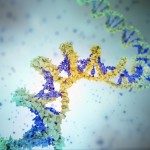Link to Pubmed [PMID] – 30923892
Link to DOI – 10.1007/s00439-019-02002-y
Hum Genet 2019 Apr; 138(4): 411-423
Scythians are known from written sources as horse-riding nomadic peoples who dominated the Eurasian steppe throughout the Iron Age. However, their origins and the exact nature of their social organization remain debated. Three hypotheses prevail regarding their origins that can be summarized as a “western origin”, an “eastern origin” and a “multi-regional origin”. In this work, we first aimed to address the question of the familial and social organization of some Scythian groups (Scytho-Siberians) by testing genetic kinship and, second, to add new elements on their origins through phylogeographical analyses. Twenty-eight Scythian individuals from 5 archeological sites in the Tuva Republic (Russia) were analyzed using autosomal Short Tandem Repeats (STR), Y-STR and Y-SNP typing as well as whole mitochondrial (mtDNA) genome sequencing. Familial relationships were assessed using the Likelihood Ratio (LR) method. Thirteen of the 28 individuals tested were linked by first-degree relationships. When related, the individuals were buried together, except for one adult woman, buried separately from her mother and young sister. Y-chromosome analysis revealed a burial pattern linked to paternal lineages, with men bearing closely related Y-haplotypes buried on the same sites. Inversely, various mtDNA lineages can be found on each site. Y-chromosomal and mtDNA haplogroups were almost equally distributed between Western and Eastern Eurasian haplogroups. These results suggest that Siberian Scythians were organized in patrilocal and patrilineal societies with burial practices linked to both kinship and paternal lineages. It also appears that the group analyzed shared a greater genetic link with Asian populations than Western Scythians did.


